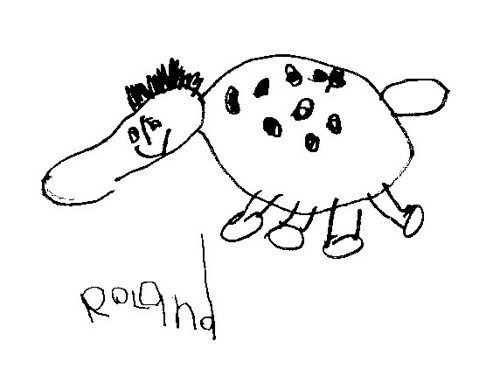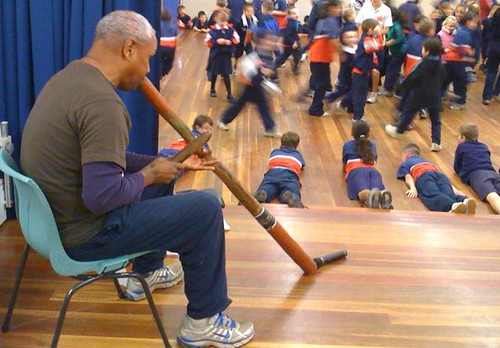It had to happen: another of my analogies has taken on a life of its own.
Early Stage 1 and Stage 1 students at my school have been studying Aboriginal Dreaming stories, interspersed with factual information about the animals/characters featured.
A few weeks ago, it was “Why the emu cannot fly”, followed by information reports about emus and other flightless birds. We also backed up the accumulation of facts with a few picture books, such as “Edwina the emu” by Sheena Knowles and Rod Clement, because fictitious Edwinda leaves poor ol’ partner Edward on the nest of large green eggs, just like in real life.
The students discussed possibilities of why emu eggs were green, and we considered the camouflaging patterns of baby emus, which enable them to hide in the shadows, away from predators. I compared their stripey patterns to that of zebras in Africa.
In our final week of the unit about dreaming stories, we’ve been using a book of Australian birds and I’ve been modelling the use of the index to look examples. The students were facinated that this particular index had no X, Y or Z, but someone in each class has usually been able to explain that, obviously, there are no major Australian birds starting with those letters. (I think I even said something stupid like, “If zebras were Australian birds, they’d be listed down here”, as I pointed to the end of the index – with my index finger.)
Of course, a whole week later, our oral revision of Australian bird facts had turned up the inadequacies of human memories. My question about camouflaging emu chicks was answered thusly:
“Baby emus have stripes so that goannas and snakes will mistake them for zebras.”
I’d been consoling myself by telling another teacher who came into the library the next day – we had a good laugh about it – but then, as if planned that way, one of her students came out the same factoid.
Oh dear. Chinese whispers are alive and well. And so, too, are Australia’s feral zebras, it seems.

The infamous spotted zebra of western Sydney: we believe he can camouflage in a litter of dalmations.



